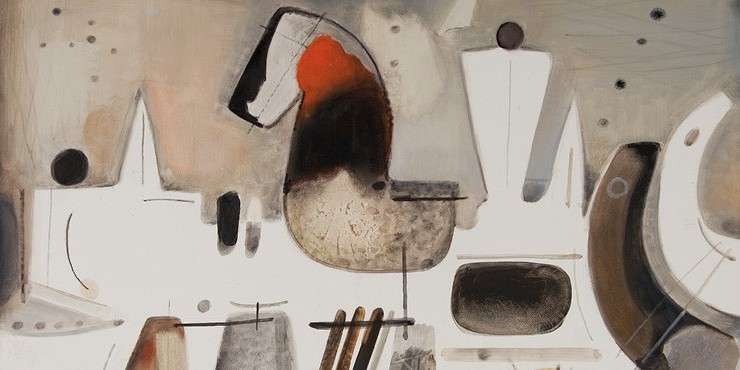
Vladimír Kompánek was a sculptor and painter and the most famous protagonist of the legendary Galanda Group; he was also one of the most charismatic figures of the Slovak fine art scene of the second half of the 20th century. And on this ninetieth anniversary of his birth Danubiana believes it fitting to present a selection of his work, specifically, the paintings from the collection of Gerard Meulensteen and the sculptures from the collection of the Orava Regional Gallery in Dolný Kubín.
Vladimír Kompánek, an eternal rebel, but also a passionate pioneer of new schools, drew from current streams of European art, but also reached all the way to the ultimate essence of domestic culture in order to create his own sculptural language and program which combined national identity and European universality in a unique symbiosis.
Kompánek’s early work was existentially related to the phenomenon of native country, nation and its traditions. However, it also sensitively reacted to outside stimuli and defined their adequate parallels in a magical scale of form and color. Kompánek’s sculptural expression moved in the direction of the reduction of forms toward pure geometrical signs liberated of details, which in his understanding acquired an almost metaphorical meaning. Symbol and sign, frequently brought to the limit of universal archetype has a sovereign place in his morphology. His two dimensional and three dimensional work always revealed new meanings and metaphors. His sculptures – female figures, bell towers, field signs, Penates, columns and portals became true and timeless symbols of country and nature. Although we can find sculptures made of plaster, metal and bronze in his oeuvre, wood in its robust and most noble forms was always his dominant material. The emotional effect of wood was frequently emphasized by color which became equal in relation to matter and shape. At the beginning only its hints and decent traces on wooden Penates, later markedly painted figures and then series of colorful toys – that was perhaps the path which eventually brought Kompánek to painting and to which he definitively surrendered in the 1980s.
In his paintings, he brought a new sensitivity to Slovak art, a Miró-like mysteriousness of forms and a return to a wide range of forgotten themes and legacies. Enchanted by the possibilities of color, he painted grandiose landscapes, sign compositions, figural motifs, magical abductions and carnival scenes. He was a painter/sculptor who projected his spatial symbols in lines and shapes. Individual sculptures were replaced in his paintings by compositions of signs, while famous attributes of the country and personalized figures became the bearers of multiple-meaning metaphors and plots.
In terms of content, the artist’s original inspiration for his sculptures and paintings is identifiable. It resonates in his entire oeuvre and is related to the archaic ultimate origin of country and nation. It is a return to the world of memories, a childhood spent in the arms of nature, where simple, everyday experiences overlapped with mysterious carnival rituals and ancient myths reaching back to pagan times. It is the artist’s most inner world which opens up in front of us through his sculptures and paintings as a magical empire in which we again and again realize our own roots.
Mária Horváthová
